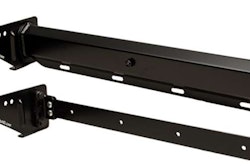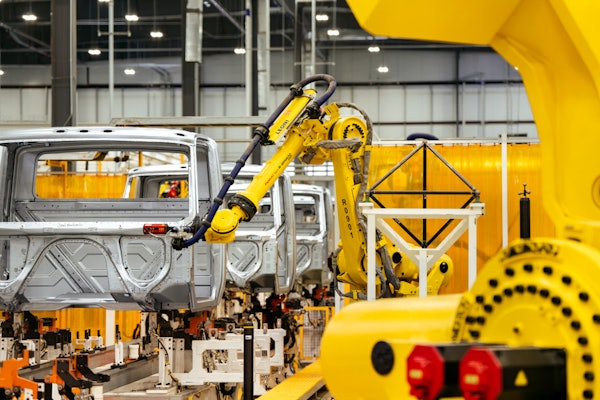Economists are like weathermen. Neither gets fired for bad forecasting. They rarely agree with each other, and I always believe their rosiest outlooks.
So I happily listened to ITR Economics President Alan Beaulieu as he spoke to attendees last month at the National Association of Wholesaler-Distributors Summit in Washington D.C.
“The U.S. economy will grow a strong 3.7 percent this year, and that expansion will extend into the first half of 2018. We’re growing at a decent clip,” Beaulieu said, noting that 3.7 percent growth should be considered a very good year. “We’re going to experience some good times ahead.”
Commenting on the importance of business-to-business (B2B) e-commerce, Beaulieu noted that:
- 2016 B2B e-commerce sales in the US reached $855 billion, representing nearly 10 percent of all B2B transactions. That’s DOUBLE the value of B2C e-commerce.
- By 2020, total B2B e-commerce sales in the US will surpass $1.1 trillion, making up more than 12 percent of total B2B sales.
- Manufacturers and wholesalers stand to benefit most, utilizing client-specific self-service portals, current product specifications and customized distributor/shipper networks.
Agreement among Economists
Agreeing that carriers should, if current indicators hold true, prepare for better freight volume in 2017, was American Trucking Associations’ Chief Economist Bob Costello.
Speaking at a different conference, Costello laid out an upbeat picture for 2017 around trends affecting freight. Also, after 2014, which Costello noted “could go down as the greatest year in trucking” in terms of improved rates, freight availability, profitability and more.
“It was so tight, full truckloads were getting moved into LTL.” The unsustainable nature of the rise led to a glut of inventories stocked around the nation.
Finally, in a trend that begin last year and continues, “We’re clearing out that glut of inventories throughout the supply chain,” Costello said—a positive factor for freight availability coupled with continued strong goods-consumption growth.
A countervailing factor in factory output growth rates—which haven’t “been very good as of late”—could temper some of the gains. While the growth rate has been down after averaging 3 percent a year between 2010-14, it’s started to creep back to that rate.
“I continue to be bullish on North American factory output” in spite of the North American Free Trade Agreement wildcard, Costello said. If a stalemate on renegotiation or some other as yet unforeseen big shift occurs, however, it could temper any gains there in a big way.
But Costello believed that was fairly unlikely, with factory output most likely to get “back up to that 3 percent growth rate after being down for several years. Factory output is moving in the right direction—it’s a little soft, but moving up.”
Not So Fast There, Optimists
But NAW’s Beaulieu just couldn’t help himself. Time for a ‘Storm Team Warning’! While the overall outlook for the next 12 years continues to be rosy, Beaulieu predicted there will be a major depression in 2030, edging close to an attempt to predict earthquakes—thirteen years away.
Still, he cited many signs for optimism, including favorable interest rates, non-residential construction improving, the rise of employment and wages and banks willingness to lend money.
Interestingly Beaulieu, who also serves as NAW’s chief economist, emphasized that the growth of the economy is not a bump that occurred because of the election of President Donald Trump, but one that had begun before the election. Nor does Beaulieu believe any action that Trump takes would influence the economic forecast.
“A legislative order takes about 18 months to feel the effect. We have the luxury of time and we can adjust accordingly,” Beaulieu advised, adding that it generally doesn’t matter who is in charge, because the president has little effect on the economy. “The economy is colorblind when it comes to having a Democrat or Republican in the White House.”
Beaulieu also predicted that the economy would slow down at the latter part of 2018 and go into a consumer-led mild recession in 2019, one that will not be as severe as past recessions. He detailed a number of reasons as to why the economy, after that recession, would continue growing throughout the 2020’s.
Beaulieu noted that the U.S. has 300 years of energy available “in the ground” while Europe has only 30. He feels that foreign investment in the U.S. will continues to grow, the standard of living will improve and manufacturing will do well, as U.S. manufacturers will be exporting more products.
“That’s a huge benefit,” Beaulieu said. “If you get into trade wars, while some jobs might be gained many others would be lost. At no time in history is there a happy ending to protectionism.”
Beaulieu also dispelled any doubts about U.S. manufacturing, which is the fourth-largest employer in the U.S., trailing only healthcare, retail trade and hospitality/food service. “The U.S. is still the world’s largest economy, followed by China”, Beaulieu added, “China has some major problems including its banking system and environmental concerns like air pollution.”
Bill Wade is a partner at Wade & Partners and a heavy-duty aftermarket veteran. He is the author of Aftermarket Innovations. He can be reached at [email protected].











